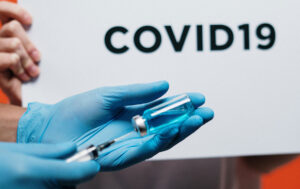The Food and Drug Administration authorized Pfizer’s COVID-19 vaccine for emergency use on Dec. 11.
The authorization opens the door for millions to begin receiving the vaccine within days. Not surprisingly, healthcare workers, along with residents and staff at long-term care facilities, are top of the list.
While each specific rollout plan will vary by state, the same question is being asked across the country: who goes next?
Who Get the COVID-19 Vaccine After the Front Line?
It’s likely that the CDC will prioritize the people who keep society functioning, also known as essential workers.
According to the National Bureau of Economic Research, around 70 percent of United States working population is employed by essential industries, which includes food and agriculture, public safety, and education. It’s also probably that older people and those with chronic illnesses are also high on the vaccine list.
Related: Protecting the Essential Worker From COVID-19
There are, however, some tough decisions to be made.
Prioritizing one group over others will be difficult, and there’s a long road ahead. While millions of vaccines are on their way, states initially won’t get enough to cover even their top-ranked groups.
In California, where there are 40 million residents, the initial shipment of around 1 million COVID-19 vaccine doses will cover about half of their 2 million front-line workers.
State-by-State Basis
Again, decisions about distribution will be made at the state level.
Pennsylvania officials announced that the commonwealth will include “critical workers” and people with high-risk conditions in its top priorities, along with healthcare workers and nursing home residents.
Dr. Marcus Plescia, chief medical officer of the Association of State and Territorial Health officials, said that leaving some flexibility for states is good because states have different resources that may make certain ways of distribution easier than others. For example, some states may be home to large factories where people are at higher risk and could get vaccinated on-site.
Best Practices While You Wait
As the first rounds of the vaccines are delivered to front-line workers, you should continue to follow OSHA best practices on COVID-19 health and safety.
The administration published guidelines for various types of industry since the outbreak began. And, on Nov. 6, the administration released a list of the most common COVID-19 violations to help employers recognize and better understand which workplace hazards involving the coronavirus. It also helps in protecting workers and maintaining OSHA compliance.
While all eyes are on the vaccine approval, progress is being made on rapid testing as well. Recently, the FDA approved a non-prescriptive at-home COVID-19 test.
So, what does the future hold? It’s hard to say, but we will continue to keep you updated along the way.
***
About Worksite Medical
In most cases, OSHA requires medical surveillance testing, and at no cost to employees.
Worksite Medical makes that program easier with mobile medical testing.
We conduct on-site respirator fit tests, as well as pulmonary function tests and heavy metal lab work, right on your job site. We also keep accurate, easy-to-access medical records for your convenience. You’ll keep your employees at work, and stay ahead of OSHA inspections.
With Worksite Medical, a mobile medical testing unit — we can bring all the resources of a lab to you. Our certified lab technicians can perform both qualitative and quantitative respirator tests to ensure a perfect fit.
Protect your team and your workplace now with Worksite Medical. Not sure what you need? Try our medical testing wizard here.
Give us a call at 1-844-622-8633, or complete the form below to schedule an on-site visit or to get your free quote!




